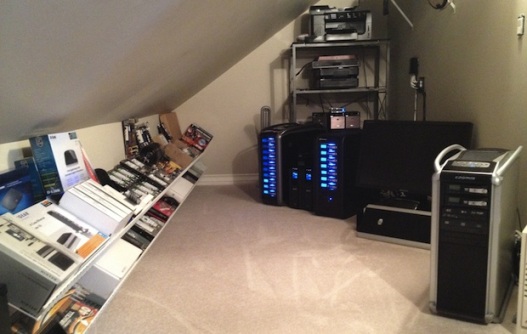Home Servers: What they are and what they can do for us
As the connected portable devices are becoming more numerous and laptops are getting lighter, there is a tendency that grows slowly but surely: that of a home server installed at home to meet certain needs. There are those who already consider it a cabinet of their house.
Those who have invested their time to configure value it as vital, while others are scared just hearing the word “Server” believing that too much Professional is any machine for their needs. So it is best to clear doubts and clarifies what those servers, which are not and what they can do for us.
The truth and the myth of home servers
First of all, we’re not talking place in house a server as such. Any PC can be used as a server, the only difference is the type of use that you give.
Define as a home server computer is permanently switched on and connected to the network, and provides a number of services and content on the local network of our house or even when we are out of it, let’s use the device we use. They were not consulted directly, so that they do not usually have no screen or keyboard attached (unless we use the TV for it). Nor do you need to keep a server-oriented operating system just any Windows, OS X or Linux.
Although it can be any machine, usually choose a computer that does not make noise, having small dimensions and low energy consuming. Its specifications need not be too powerful: it will not be something to play or perform complicated operations. Computers that have many ballots to be used as home servers are the Barebone PC, the Mac mini computers or even those computers that have been old at home and can no longer use for every day.
Depending on the use we give or how we have local network at home, these computers acting as servers tend to be working next to the TV in the lounge or beside the router.
Pay attention, anti-clouds: what can serve a home server
And why do we need a computer permanently on at home? The possibilities can be many, and each will require a different configuration or hardware.
We can, for example, use that server to store all your movies or pictures and other files that have the whole family. For that we need that server has a good hard disk (and a good system backups!), Or at least a connected external drive.
It is the perfect solution for those who do not trust store all this material in any cloud, nothing better than keeping everything in house and to remotely access either from home or from anywhere in the world. Bittorrent Sync, for example, is a solution that allows us to configure a content synchronization service replacing the cloud for our “unit” of home. And if we move to more multimedia, we can always create a content server with Plex Media Server and connecting the server to the TV.
Other more specific uses may be, have knowledge of local networks and ports on our router configuration, assemble our own web or FTP Server stored locally and use their address (care, have to secure properly if we do not want disasters from occurring) to share files with other people. Or install our free download manager with which, from anywhere, even from mobile, you can start sending start sending URL addresses or locators of P2P networks.
Or we can combine all of this by installing a powerful computer TV, and with a good graphics card to use that server as a console video game helping wireless controllers. The SteamBox and SteamOS operating system are based on that concept, without going any further.
Tags: myth of home servers, truth and the myth of home servers











